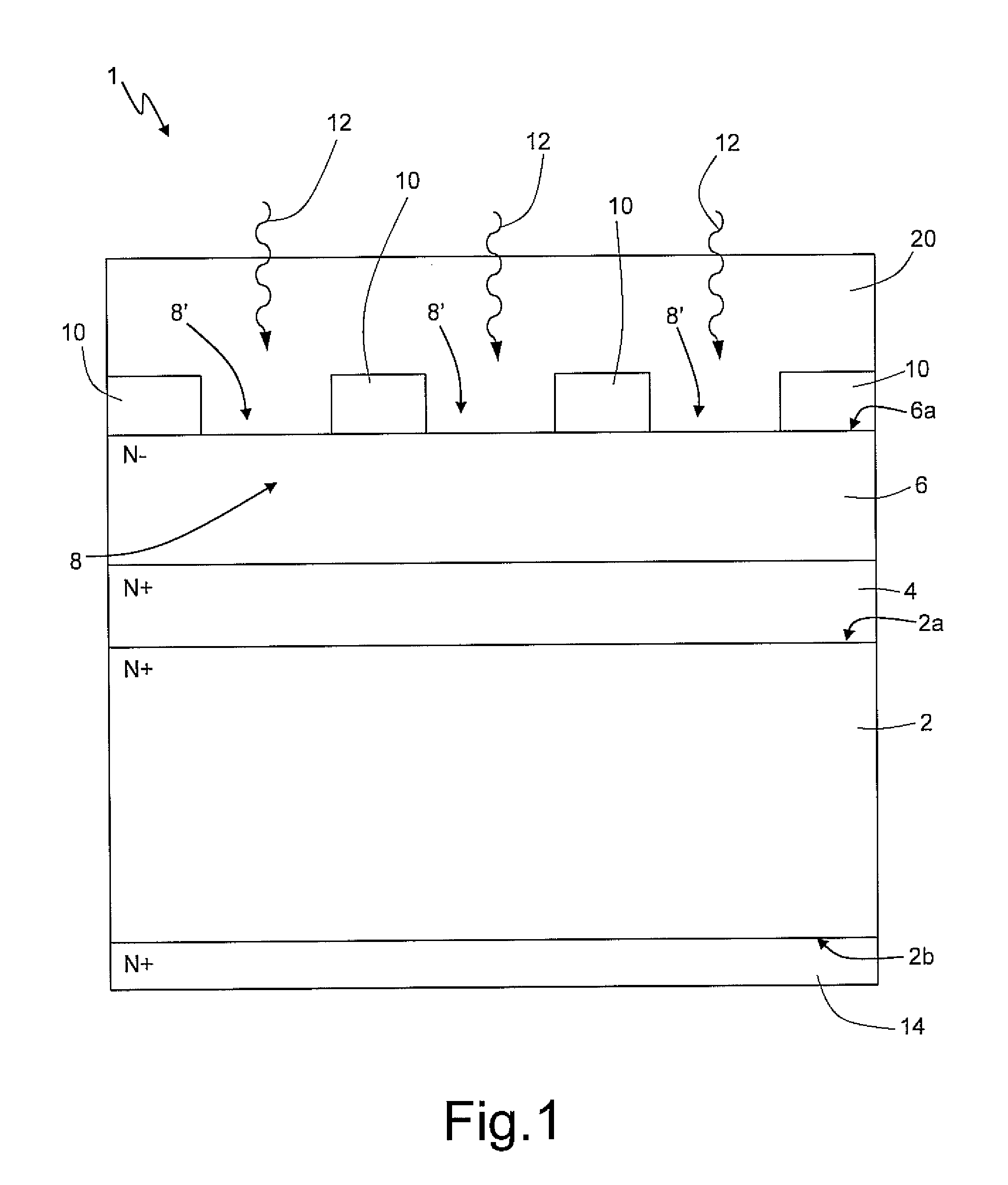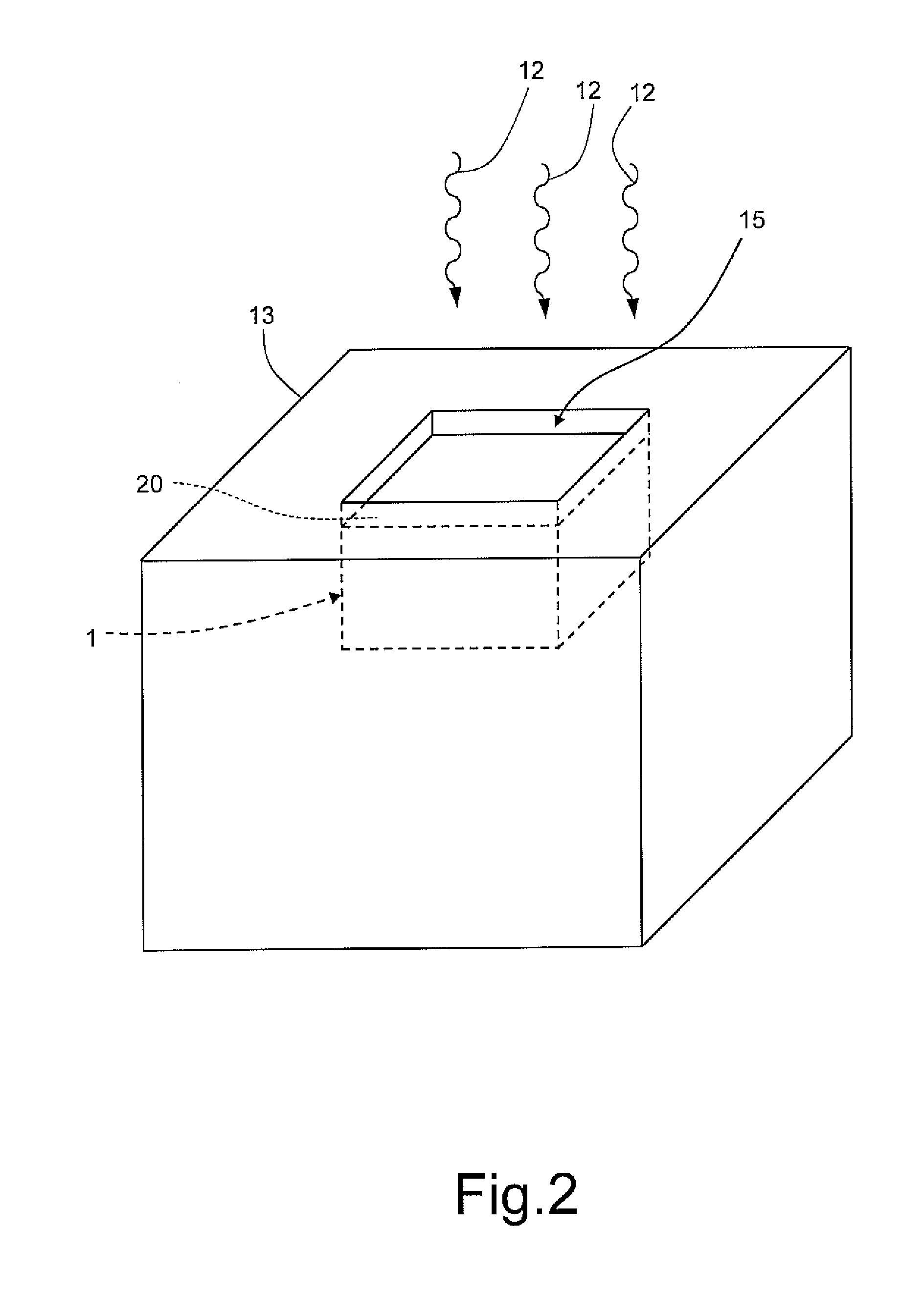Photodetector device with protective and antireflective cover, and manufacturing method thereof
a technology of photodetector and protective cover, which is applied in the direction of photometry, photometry using electric radiation detector, instruments, etc., can solve the problems of low quantum efficiency of these devices in the range of uv wavelengths, limited or at times disadvantageous use, and large dimensions
- Summary
- Abstract
- Description
- Claims
- Application Information
AI Technical Summary
Benefits of technology
Problems solved by technology
Method used
Image
Examples
Embodiment Construction
[0035]The present embodiments relate to a photodetector device including a semiconductor body, having a front surface, and an active-area region which extends in the semiconductor body facing the front surface, configured for receiving a light radiation and generating, by the photoelectric effect in response to the light radiation received, electrical-charge carriers (in particular, an electron-hole pair, which, under the effect of an electrical field, generates an electric current). The photodetector device further includes a polydimethylsiloxane (PDMS) cover layer, which extends on the front surface in the active-area region so that the light radiation is received by the active-area region through the cover layer. The cover layer offers protection for the front surface of the semiconductor body and acts as antireflective layer for the light radiation received. The light radiation is, in particular, a UV radiation. The particular physical structure of the photodetector device is ir...
PUM
 Login to View More
Login to View More Abstract
Description
Claims
Application Information
 Login to View More
Login to View More - R&D
- Intellectual Property
- Life Sciences
- Materials
- Tech Scout
- Unparalleled Data Quality
- Higher Quality Content
- 60% Fewer Hallucinations
Browse by: Latest US Patents, China's latest patents, Technical Efficacy Thesaurus, Application Domain, Technology Topic, Popular Technical Reports.
© 2025 PatSnap. All rights reserved.Legal|Privacy policy|Modern Slavery Act Transparency Statement|Sitemap|About US| Contact US: help@patsnap.com



